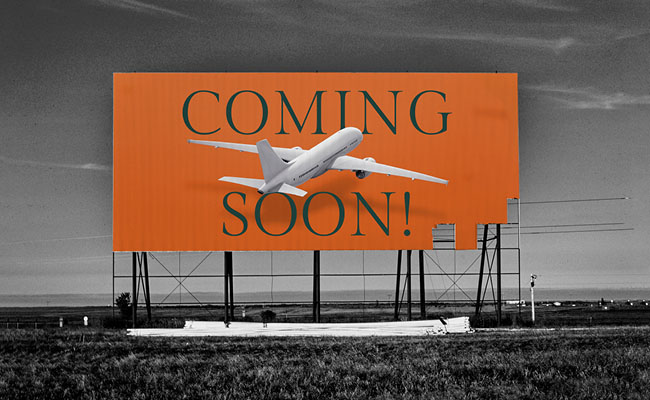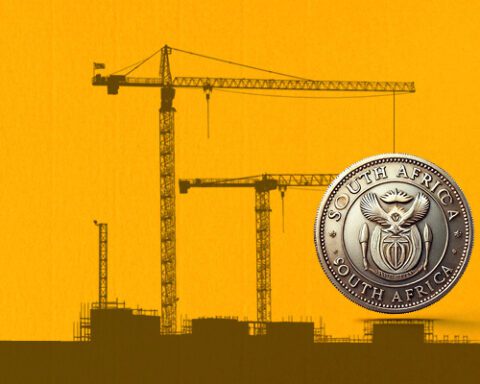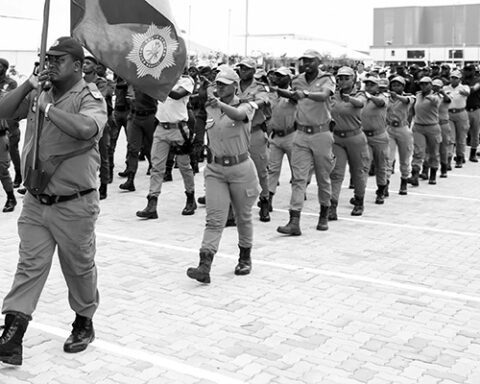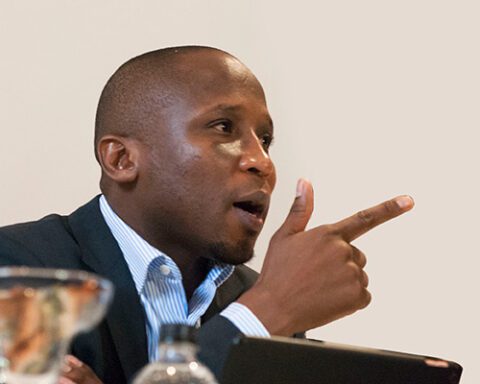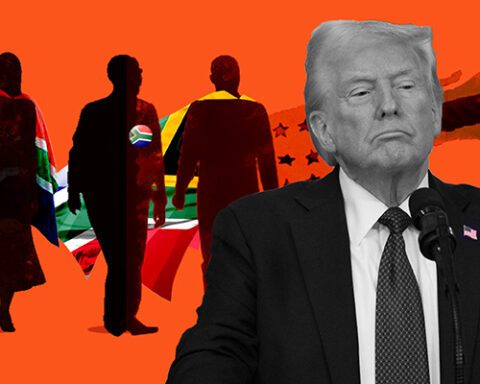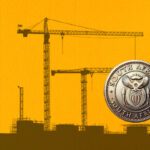Aerotropolis. It’s exactly what you’d imagine: millions of tourists and businesspeople thronging a state-of-the-art international airport; hundreds of thousands of tons of cargo wending its way through a dedicated terminal. A veritable city fanning out from the “air platform”: industry; a special economic zone; housing; commercial services. A hive of activity. A multi-purpose fever dream.
That’s the Gauteng provincial government’s plan for the Vaal Aerotropolis. A monster airport: 45-million passengers a year on completion (OR Tambo currently services 21-million); 500,000t of cargo processed (OR Tambo: 650,000t). There’s also a manufacturing, logistics, agriculture and trade hub, social housing, student accommodation.
Yours for just R200bn. Or, at least, that’s what finance MEC Lebogane Maile said the airport would cost.
Now, it’s a pretty big ambition for Panyaza Lesufi’s government, given Maile in September declared the province could be broke by 2025 “if we are not vigilant and we are not careful”.
Good thing, then, that this development is to be funded by the private sector. But the fact that it’s punted as a public-private partnership, and that the provincial government, together with the national department of trade, industry and competition, will be “investing in bulk”, suggests the claim is questionable.
Questionable, in the same sense that Lesufi’s claim earlier this year that, on the day after the election, “any citizen can go to any hospital, private or public, to receive the best treatment and that afterwards government will pick up the bill” was questionable.
Investing in an ‘unstable’ municipality
But here’s where reality kicks in. The Vaal Aerotropolis is to be situated in Sedibeng district municipality, sandwiched between the smoke-belching ArcelorMittal steel refinery, Sasol plant and Eskom’s Lethabo power station. It will rise above the festering rubbish dumps of Emfuleni.
In other words, if you think the arrival at ORT is a shock to the system – broken streetlights and unmarked roads – wait till you see this guy.
See, Sedibeng isn’t exactly known for good governance: air pollution is a perennial issue – as is water; there’s runoff from industry and townships, and nonfunctional wastewater treatment plants mean raw sewage is discharged into the area’s waterways. As the department of co-operative governance and traditional affairs (Cogta) noted in 2020, the pollution from a collapsed sewer network affects the socioeconomic standing of the municipality – including development efforts.
Waste management is no better. By Sedibeng’s own admission, it is ad hoc, with little foresight having gone into a growing population. Ditto landfill site allocation. There’s no funding for staff to perform waste management functions either.
Another Cogta report explains that electricity supply is problematic. Potholes are ubiquitous. There’s an absence of strategic planning and a backlog in infrastructure and maintenance. (Incidentally, a provincial infrastructure funding report reckons the province needs R1.8-trillion over 15 years to eradicate its infrastructure backlog. That’s trillion with a T.)
While the area has a decent network of major roads to economic hub Joburg and is solidly covered by rail, the mayor admitted to parliament in 2020 that the decline in the manufacturing economy has resulted in neglect and vandalism of infrastructure such as rail sidings and servitudes.
Sedibeng’s accounts are a mess too – its financial position is “unstable” due to deficits incurred over time, its annual report notes. The auditor-general has flagged its going-concern status. Indicatively, as Sedibeng itself admits, the municipality is “in an unattractive standing on the open investment market”.
The investment needed in Sedibeng, according to the Gauteng City Region integrated infrastructure master plan, is R50bn.
So not exactly a screaming buy.
It gets worse. The Aerotropolis is supposed to be “Emfuleni local municipality’s multifaceted gateway to the world’s markets”. That may be putting lipstick on a pig.
Emfuleni, in Sedibeng, takes dysfunction to all kinds of new levels. It’s been the subject of provincial intervention three times – for corruption, financial mismanagement and a growing debt crisis; to put in place a financial recovery plan; and to counter administrative inefficiencies, according to the DA.
It is characterised by potholes, sewer spills, no refuse collection, ageing road infrastructure and poorly managed budgets, government admits. And sketchy electricity. And it loses more than half its water. And it’s got one of the highest kidnapping rates and car theft rates in the country.
So, about those millions of tourists and businesspeople …
Emfuleni also owes creditors R10bn, says News24 – and those that do get paid have to wait about 600 days to have their invoices settled. Oh, and the publication reports that it has apparently been making up fictitious funded budgets, punting hundreds of millions of rands in surpluses when it’s in fact running billion-rand deficits. Just the place to park a whack of cash that’s ripe for kickbacks and “gratuities”.
In other words, it is about as investable as Steinhoff on a bad day.
Funding hole
Not that everyone is put off by the dire situation. Citibank has bravely pledged a R1.4bn loan to a special purpose vehicle that will invest in infrastructure for the mega city. The US bank reckons that investment could unlock a further R30bn in funding. If that happens, it could cover the first phase of the project, by finance MEC Lebogang Maile’s estimate. But so far there doesn’t seem to be much other uptake. And, more critically, it’s a drop in the ocean for a project with a R200bn price tag.
There’s also the question of whether the province even needs a third international airport, and whether there’s sufficient demand for its services. As it is, ORT isn’t operating at full passenger capacity (it’s processing 21-million of a potential 28-million passengers), and is already reportedly planning a new cargo terminal.
A 45-million-passenger behemoth? It’s hard to see the business case.
Now, obviously Sedibeng could use development – it’s a heavily depressed area: 49% of the residents live in poverty, the decline in the steel industry has meant unemployment stands at a massive 51% and the Gini coefficient is at 0.64 (one is a measure of perfect inequality), according to government’s statistics. In that same report, Cogta puts the primary education level at just 44%, while 39% of the population has a matric.
Which makes the Aerotropolis look like an easy fix – monster funds, jobs, a shakeup of a stagnating economy. What’s not to like?
But it’s also pie-in-the-sky. After all, if the government can’t get the very basics right, how is it to provide the infrastructural backbone for an airport city. Short of private investors rebuilding the entire municipality from the ground up, how will this not be a very large, very expensive white elephant? If it even gets off the ground.
Grand visions are not necessarily bad things, but without the political will, infrastructure and capacity to back them up, they’re just castles in the air.
Sign up to Currency’s weekly newsletters to receive your own bulletin of weekday news and weekend treats. Register here.
